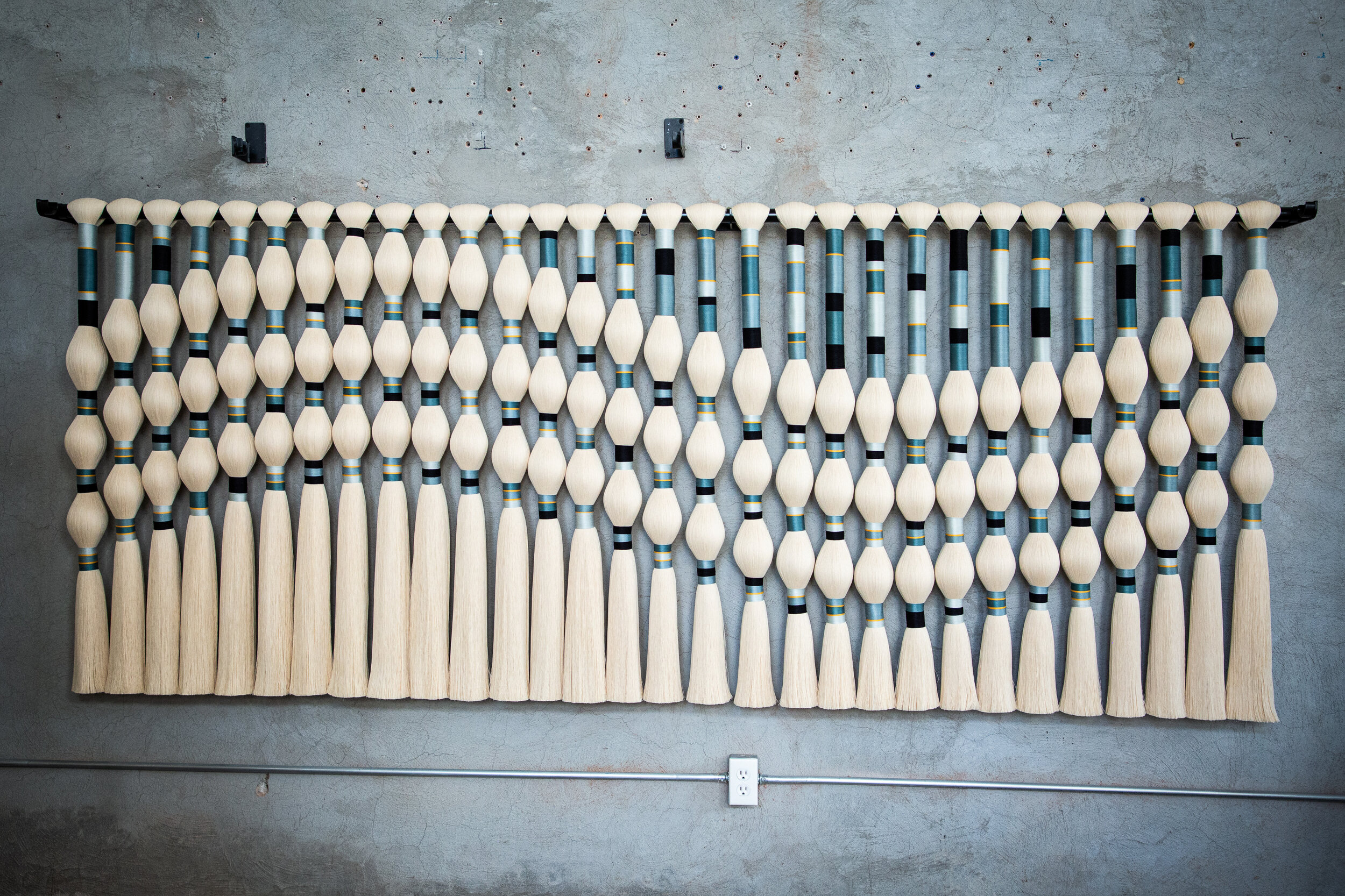Craft that Sustains: Interviewing Caralarga, our “Handmade in North America” Cover Star
The company’s finessed wall hangings make a strong, soulful case for bringing more Craft into our homes and projects.
The beauty of handcrafted objects of the highest quality has always been appreciated by interior designers—and is more appealing than ever to end consumers eager for a break from mass-production and tech. The proliferation of shops and showrooms like FAIR, Colony, Radnor and The Future Perfect that specialize in high-end handmade attests to this paradigm shift. While the appreciation for the handcrafted has waxed and waned in the US, Mexico never strayed from the commitment to hand craft. Building on deep roots, Mexican producers like our Report 9: Handmade in North America cover star Caralarga are forging a new tradition of sublimely modern and socially responsible design.
From the cover: This Caralarga Large Format piece “Marimba from Cerro Azul” just found a home in AD100 Designer Nicole Hollis’s in-progress Cabo San Lucas project (check our her instagram stories to see the install). Handmade from 100% raw cotton yarn, cotton yarn ties and papier-mâché spheres, this impressive piece stands at almost 10 feet wide.
Get to Know Caralarga
“Our textile studio is based in the Old Textile Factory in Hércules, Querétaro. When we arrived in 2014, we discovered discarded raw cotton thread and denim, deemed unusable because of tiny, almost imperceptible mistakes in the weaving,” says Caralarga founder Ana Holschneider. This detritus inspired Holschneider and Socorro Gasca, the master artisan at Caralarga, to create a reclaimed jewelry line. The pieces grew in variety, scale and ambition, leading to their Large Format collection of wall hangings. They also make wall tapestries and rugs from recycled raw cotton that they recover from the residue they create when making their Large and Medium Format pieces. Caralarga’s Tapetes-Tapices are available on their website in smaller formats like mirrors and wall pieces, and are also custom made for clients who wish to have a unique size for their projects.
Commitment to Environmental and Social Sustainability
The 20+ person Caralarga team takes pride in mantaining high quality, artisanal standards, and looks after every step in the production process. They believe in fair trade, sustainable production with a low environmental cost, and they make sure the artisans they collaborate with are able to learn and develop their own craft, all while receiving a fair payment for their work in a community-focused environment.
“We’re a diverse team in which all members contribute to building a safe, creative way to complete our production goals” they added. “We believe that the most enriching thing about collaborative or participative work is understanding that at the end, no matter what we’re working on, the goal is that the road to completing that piece is one in which we are able to create community, create a working team that we can share time, ideas, processes with. We are proud to use traditional Mexican resources and techniques like sansevieria fiber (aka snake plant) and artisanal paper maché.” This localized regional production also keeps the carbon footprint of the work low.
In the making: “Marimba from Cerro Azul”
Dyed cotton thread is hand tied around thousands of raw cotton threads
Each grouping of thread is brushed out, and all the excess threads are captured for other wall tapestries.
The Rush of Inspiration
When we asked Ana where her inspiration comes from she told us “Mainly, I think it comes from the adrenaline of experimenting with eye catching materials, natural fibers that can be transformed into beautiful items.” She goes on to say “Nature is also a fountain of inspiration. Looking into reinterpreting concepts of nature, landscapes, Mexican traditions, symbolisms through the craft of weaving fibers, is also a very powerful source of inspiration.”
Surprisingly, Ana doesn’t necessarily consider herself a designer: “I had never thought of myself as a creative person, or even thought I could design. I guess that the lack of technical skills and basic knowledge of a designer, qualifies our creative process as chaotic, very emotional and spontaneous. I am mostly driven and motivated by ‘feeling’. I think I have developed creativity from the apprenticeship and expertise learned from experimentation and a very simple, trial and error method. This has helped me understand a little better where and how the creative process should lead me.”
“I believe that through craftsmanship we can transform simple and common resources into timeless, beautiful, meaningful items. Craft adds great value to anything we create, express, or want to share. ”
Artisanship and Indigenous Ingenuity
If putting together this edition taught me anything, it’s that we owe much of our natural fiber and dye knowledge to Indigenous communities, who are still keeping it alive today. From sansevieria fiber to dyeing with cochineal, Report 9 covers highly specialized, artisanal materials and methods birthed and perfected in North America. The American design industry has often looked to Europe for inspiration, but I’d argue we can and should look closer to home for amazing design with an incredible story. To delve into the richness of contemporary luxury design coming out of Mexico, the United States, and Canada, dowload or view Report 9 today.











